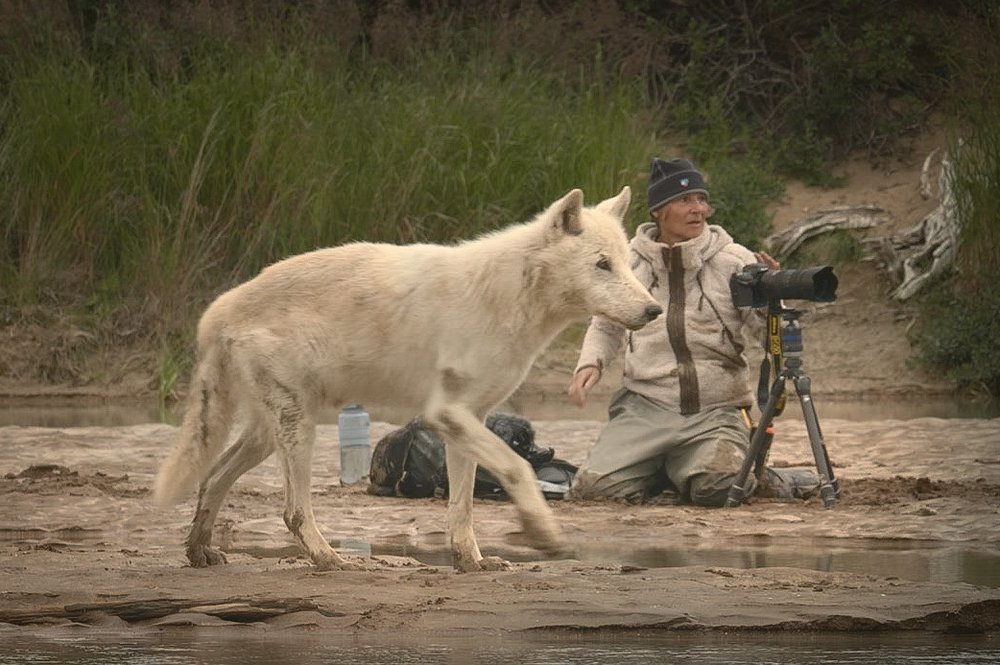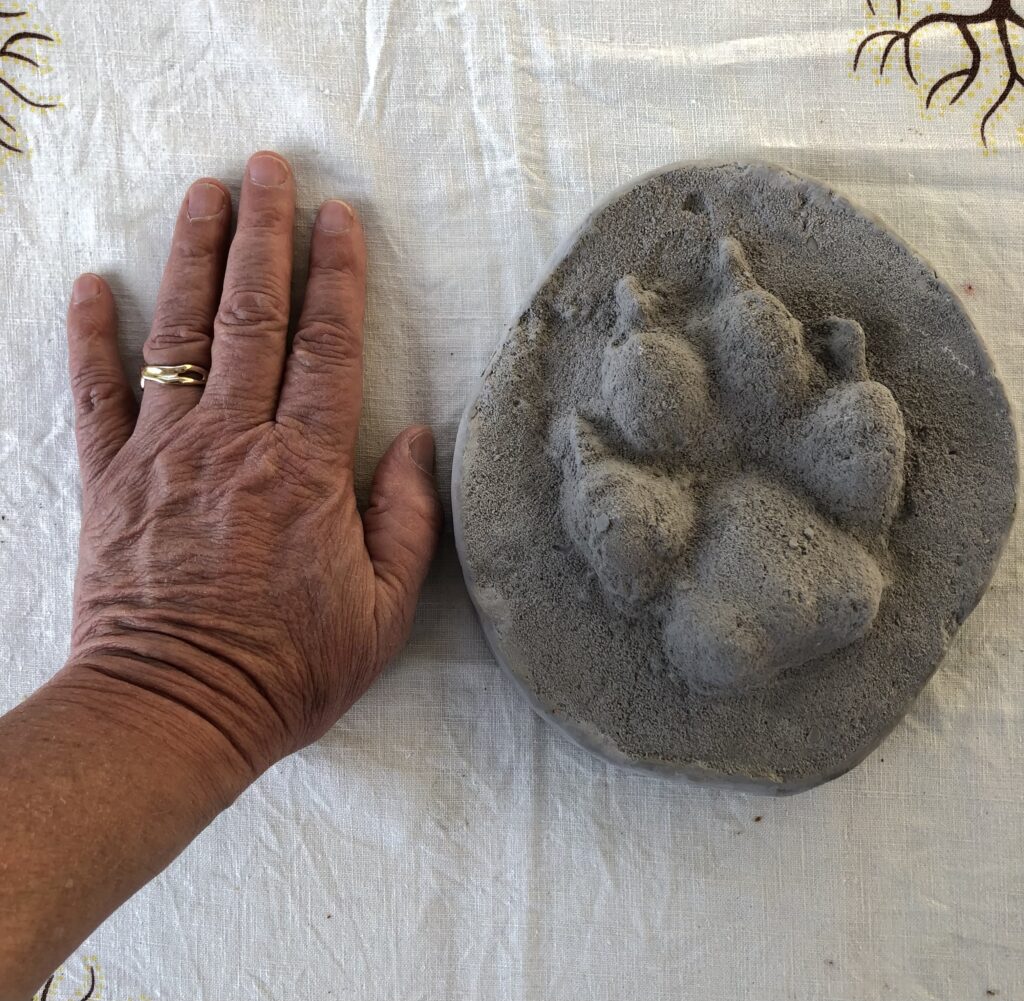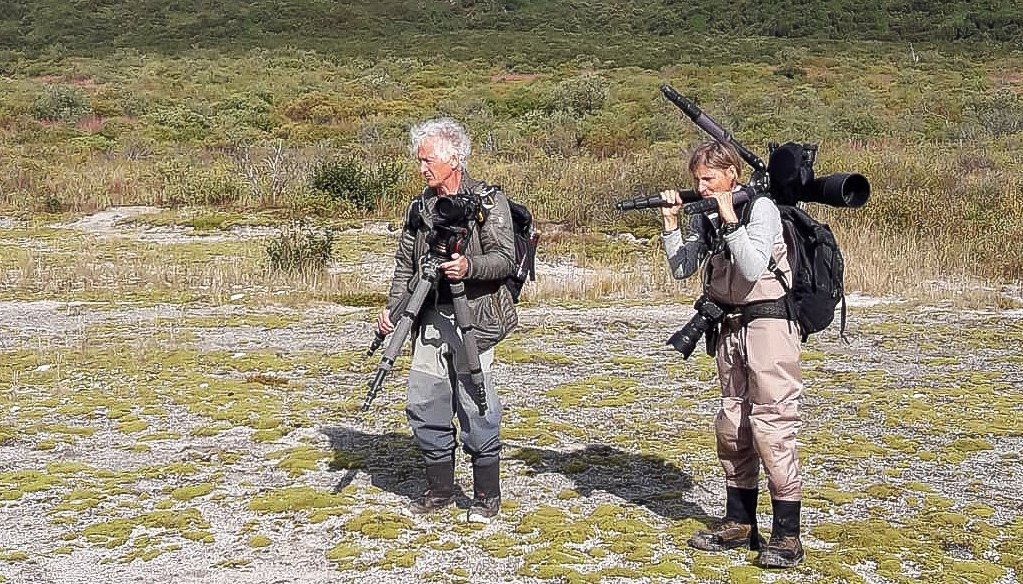Buck Wilde was dozing under a tree on the Alaska Peninsula. When he opened his eyes, Mosquito, big as a Great Dane, was staring him in the face.
It was a reunion, of sorts. Buck, a wildlife photographer and guide, and his client, Swiss wildlife photographer Esther Gossweiler, had met Mosquito, a handsome, nearly white sea wolf, in 2018.
Now it was 2021, and Mosquito, named for the cloud of insects that was tormenting him that first summer, had risen from adolescent to alpha male. In that role, he wanted Esther to see his pups – “the ultimate display of trust,” Buck says.
At that moment, he knew he had a film.

Maybe you’ve seen Buck Wilde trekking around State College: long white hair gathered in a ponytail, backpack on his back as part of his training for his next Alaska expedition.
He goes every summer. The 74-year-old is here the rest of the year because he grew up here – on a farm in Bald Eagle Valley, specifically – and studied electrical engineering at Penn State.
In those days, he was called Sam Holderman. Or Buck Holderman, after his maternal grandfather, Buck Spicer.
For the first couple of decades of his adult life, Buck says, he was a “technocrat.” One project, for the CIA, involved interpreting body language and facial expressions using artificial intelligence. Buck didn’t know it at the time, but what he learned about human behavior would be essential to his work with bears and now wolves.
In 1990, Buck went to Alaska to visit his brother Dave, who worked for the state Fish & Game. Right then and there, he decided to immerse himself in wilderness and photograph wildlife.
Before long he had a contract for a series of children’s books. His publisher liked that his first name was Buck but prodded him to come up with a jazzier last name.
Buck Wilde was born.
When you see images of Buck’s wildlife encounters, it’s tempting to call him a bear or wolf whisperer, as if he had a magic power to soothe these predators into gentleness.
But if Buck Wilde has a superpower, it’s patience. That’s the “bait,” he says. (Never use food.) He looks for tracks, and when he finds them, he makes camp and shows himself, day after day, until the animals’ curiosity overcomes their wariness, and they start checking him out.
Once that happens, survival and eventually, rapport, is mostly a matter of behaving like neither predator nor prey. In other words, if you stay low and make no sudden moves, the animals aren’t going to feel threatened. And if you don’t run, you’re not going to activate their instinct to give chase and make a meal of you.
Buck’s calm and patient approach – he calls it “doing a chill job on myself” — served him well during 30 years of guiding nature documentarians to the brown bears of the Alaska Peninsula. His scariest encounter: A mama bear charged him, reared up and roared in his face. It was a warning. One of her cubs, he realized, was behind him. Once she waved her little one out of harm’s way, she went back to fishing for salmon.
Buck carries pepper spray, he says, but never uses it.
In 2016, Esther Gossweiler took a two-week crash course with Buck on photographing bears. They kept hearing wolves at night and seeing wolf tracks in the day. Esther wanted to see one. When she met Mosquito there seemed to be an instant connection. Buck was happy to pivot from bears to wolves.
“Wolves are challenging,” he says, “and I needed a challenge.”

Not surprisingly for a farm boy, Buck had grown up with dogs, including a Siberian husky named Wren, who riled the neighbors by killing deer. When his parents gave Wren away, Buck says, “I cried like a baby.”
Mosquito is nobody’s pet, but anyone who has been around dogs would recognize his behavior. In footage that will be used in the film, Mosquito play-bows – the position that dogs assume when they want to frolic.
Mosquito, as it happens, is a particularly dog-like wolf. Analysis of a hair sample found that he has four of the hyper-social genes found in dogs. Most wolves only have one.
The film about Esther and Mosquito is to be called “My Wolf Companion” – think “My Octopus Teacher,” only with a sea wolf. A rough cut should be ready by the end of the year.
Two local connections: Pat Shipman, retired Penn State anthropologist and author of “Our Oldest Companions,” about the domestication of dogs, is consulting on the project. Rick Brandt, a noted cinematographer who learned his craft at Penn State, is the editor.
Buck has been involved in 20 wildlife documentaries, including the BBC production, “Great Bear Stakeout,” but he’s particularly excited about this latest project.
“This is a pack of wild wolves,” he says. “This has never been done. This is why I’ve got a film.”



